Dream Team Astrid.
At the 2021 Fjällräven Classic Sweden, there was a group of hikers who joked more, laughed harder, and sang louder than everyone else on the 110-kilometre trek. Nine gregarious Danes, they called themselves “Dream Team Astrid”, and they proved that with the right people, gear, and mindset you can go far. Sometimes, all the way to Abisko.

The Skovbakke family live in Dyrup, on the island of Fyn, Denmark, and includes parents Mette and Morton, as well as 22-year-old triplets Astrid, Jonas and Andreas. They are what you would call an “outdoorsy” family. Mette, for example, grew up in a scout family and had already completed her first mountain hike at 10 years old. The triplets have camped from an early age.
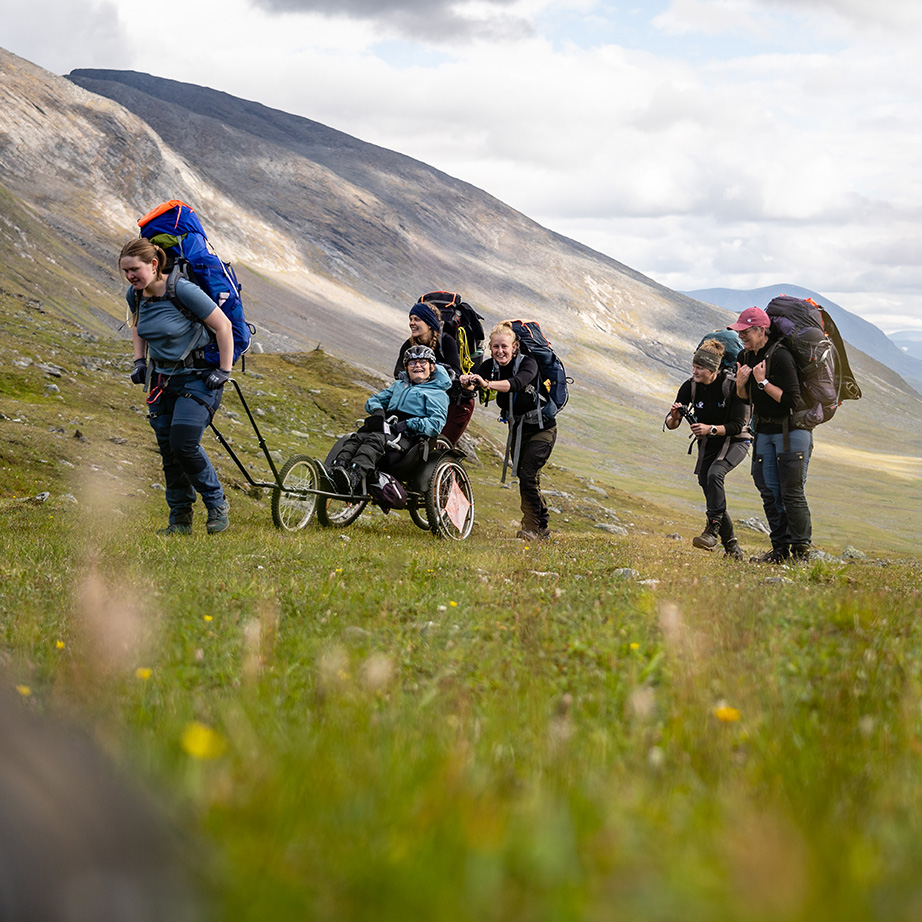
I am so grateful for the women we had on the team and their amazing mood. They fought so hard to help me achieve my dream.
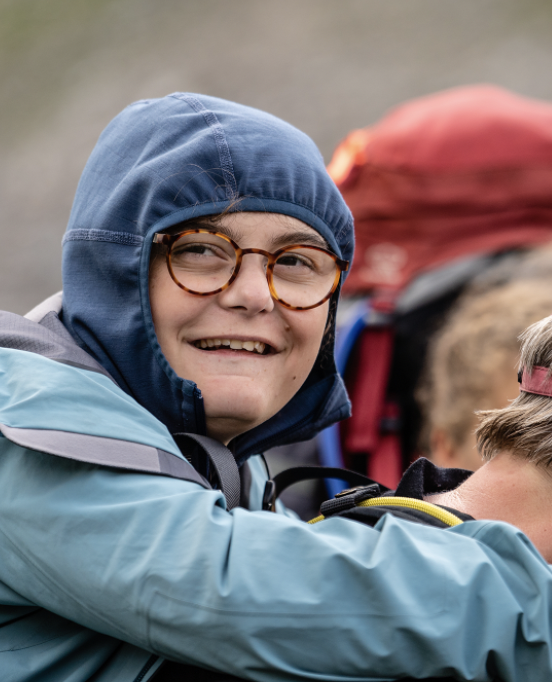
Astrid Skovbakke
Fjällräven Classic Sweden participant
One day, Mette and Astrid got the idea to trek the Fjällräven Classic Sweden from Astrid’s best friend Sine Thulin. An exciting prospect for these nature enthusiasts, the decision to participate required some serious consideration, because Astrid is dependent on a wheelchair. They wondered if a 110-kilometre trek with heavy backpacks on uneven, rocky terrain was doable. In the spring of 2018, they decided it was. As Astrid says,
“Sine has hiked the Classic Sweden three times and told us a lot about it. For many years we talked about walking it together, because I love being outdoors and experiencing new things. I also love to challenge myself and prove that I do not let my disability stop me – even if I need some help to achieve my goals.”
Astrid and Mette’s tips for trekking while using a wheelchair #1:
The chair must be purpose-built for the terrain.
Preparations started with the search for a wheelchair, which could manage the enormous stress that an inaccessible mountain environment can dole out. The choice fell on a chair produced in Norway, highly recommended by other wheelchair hikers.
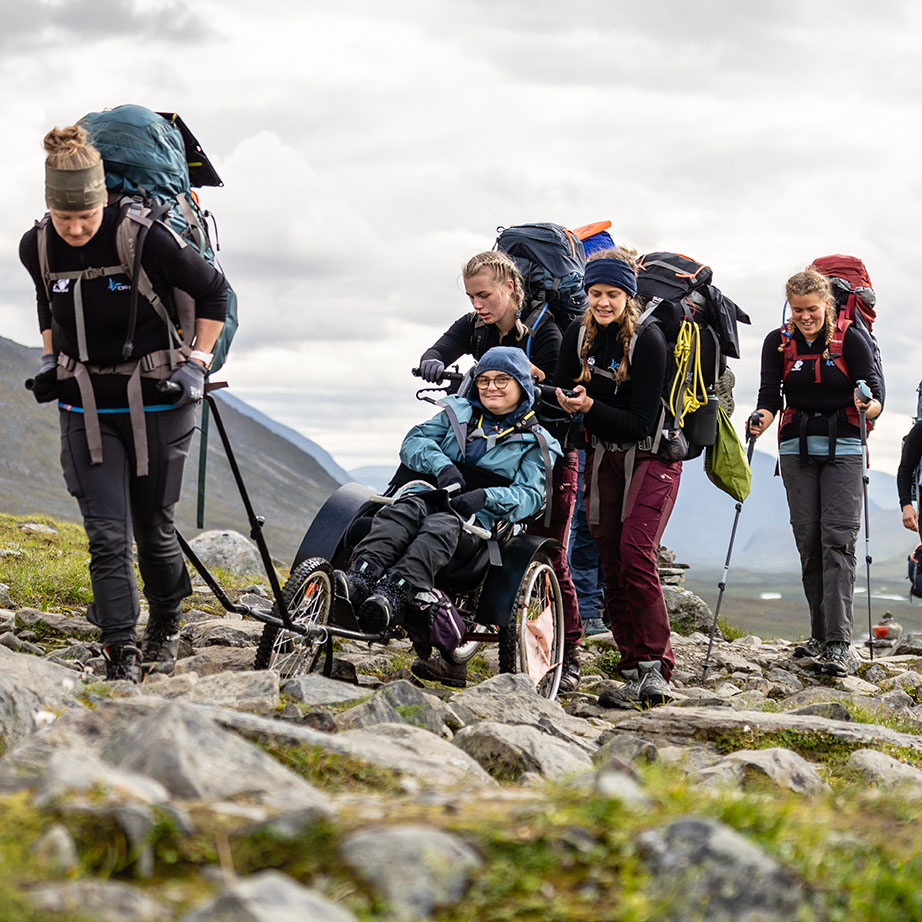
Upon registering in 2019, Astrid and Mette encountered their first challenge. According to Mette, “We bought tickets for Classic Denmark no problem, but a few days later when we were going to buy tickets for Classic Sweden, we couldn’t. So, I wrote the company.” Unfortunately, the initial response was not promising. Fjällräven Global Event Manager Calle Hård Af Segerstad was hesitant due to safety concerns:
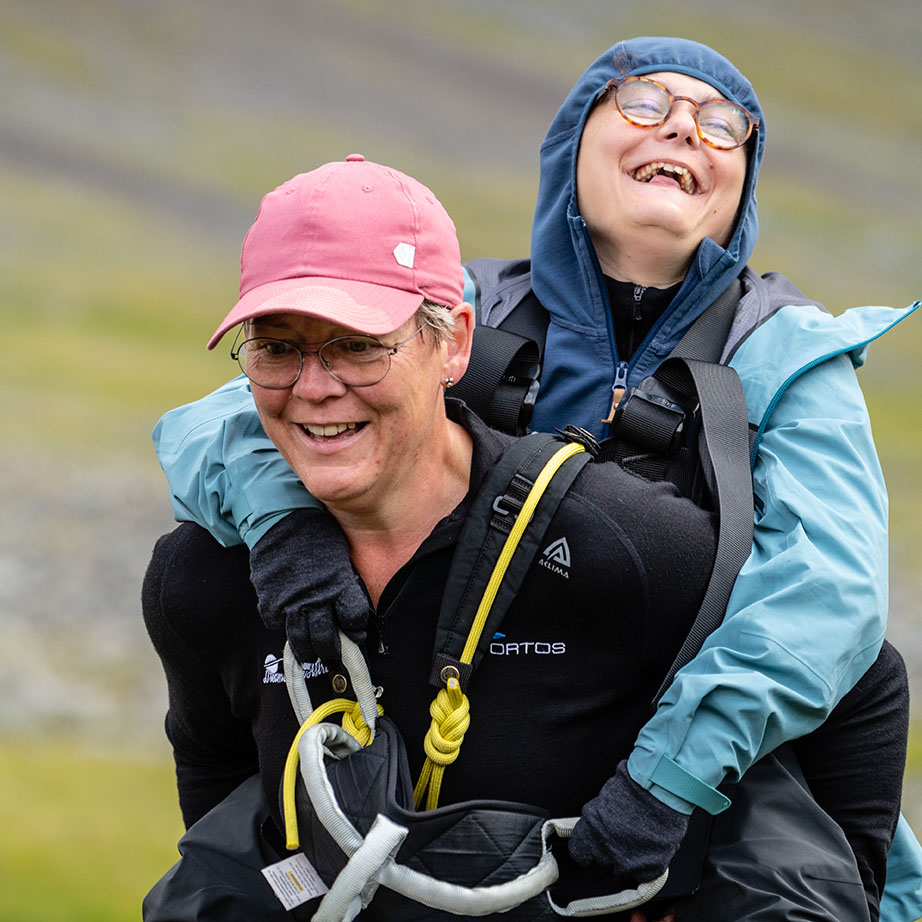
“When they first contacted me about tickets and a possible support team, I did not hesitate at all. I just said ‘no!’. To do the Classic Sweden in a wheelchair, was just not a good idea, and basically impossible.”
Astrid and Mette’s tips for trekking while using a wheelchair #2:
Do test hikes to check the wheelchair and equipment.
In a swift contradiction to Calle’s assumption, Astrid and her team hiked the Söderåsen in Sweden as training for the 75-kilometre Classic Denmark. This was a clever move as the area provided good practice for the stony passages and slippery footbridges of a mountain environment. During the test hike, they confirmed that a team of five – apart from Astrid – was needed for the Classic Denmark. They did it, and it went really well, but they also learned that a team of five would be inadequate for the longer and more challenging Classic Sweden.
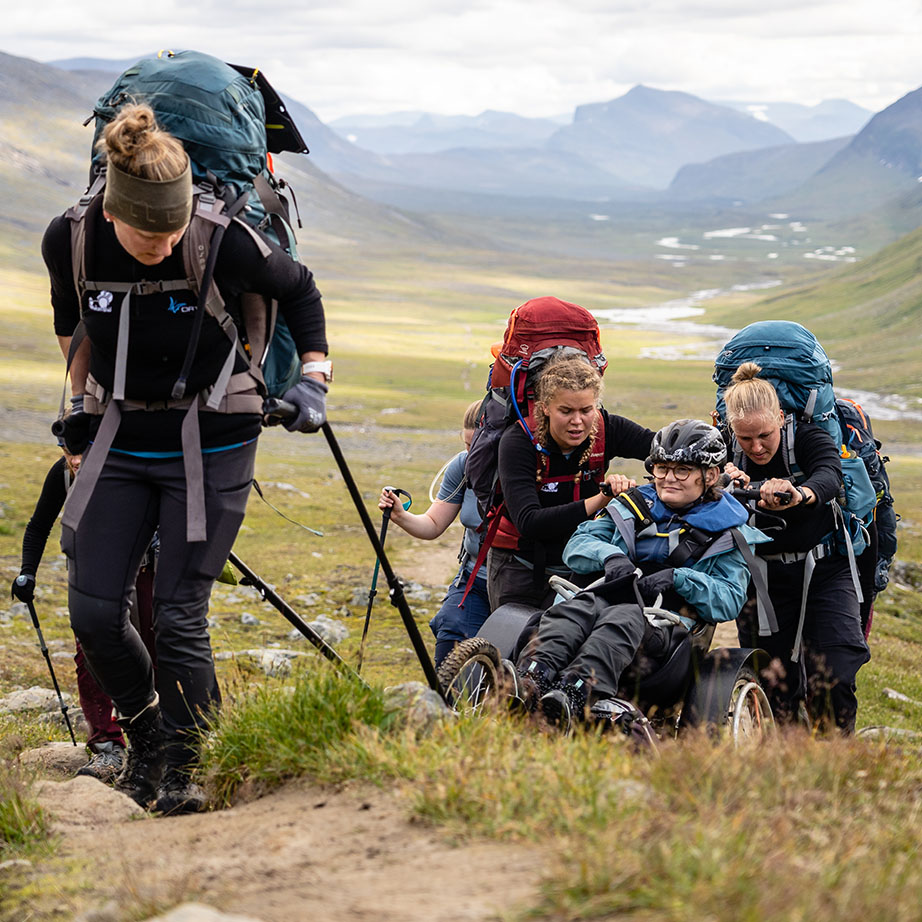
This in mind, Mette met up with Calle to talk about the Classic Sweden further. Though still reticent, he suggested that Mette and Morten walk parts of the Classic Sweden before deciding on next steps. They did so successfully, and met with Calle once again in Kiruna, Sweden. “We spoke about the route and what would be expected from both parties in terms of preparation, but reservations remained”.
2020 made this all a moot point, as the pandemic prompted the cancellation of the Classic Sweden entirely. The time was not wasted on Astrid and Mette though. They took on a trek in Norway to prove that they could handle the challenges of the Classic Sweden. The hike in Hardangervidda was a good test for both the wheelchair and the team, and when Mette contacted Calle to participate in the 2021 event, he was all-in.
Soon enough, nine excited women stood at the Classic Sweden starting line in Nikkaluokta. “For three years we fought to stand there,” recalls Mette, “We had trained, prepared and started a few days earlier than the other participants to have time on our side. But of course, we were nervous.”
Astrid and Mette’s tips for trekking while using a wheelchair #3:
Build a team accustomed to hiking and adapt it to where, and how far, you are trekking.
During much of the trek, Astrid travelled in her wheelchair. One person pulling from the front and two people pushing from behind. All while carrying their own 18- to 26-kilogram backpacks. Sometimes the terrain proved too difficult, in which case, the team removed their backpacks to retrieve later. Or, they relied on other members to carry them. Astrid’s university friend Katrine Kingo outlines the collaborative spirit: “During the entire hike, we were all very aware of each other. We did not have a schedule for who works the wheelchair. Everyone took their own initiative and just asked if they should take over.”

From time to time, Astrid walked on her own, including a 400-metre stretch with help from others. During especially steep uphills and downhills, or when the path was too inaccessible, Mette carried Astrid in a harness.
Seeing this tremendous level of teamwork and effort, you can be sure that the other Classic Sweden participants forgot their own tired feet and weary legs. Mette explains how it all came together:
“We had no set plan for who should do what, but quickly understood that you offered to do other chores as soon as you were done with your own. We also pitched the tents close to each other, so we could easily help each other out. It was a true pleasure to experience the team’s cooperation. It was incredible to see everybody’s consideration for each other.”
Astrid and Mette’s tips for trekking while using a wheelchair #4:
Never compromise on safety.
One late afternoon, on the way down the Tjäktja pass, Mette fell with Astrid on her back. Astrid was unharmed, but Mette sprained her left foot. Devastated that she betrayed Astrid’s trust in her care, Mette barely made it to the campsite on account of the pain and had serious doubts that she could continue. After a worrisome night, the team made it to the Tjäktja checkpoint, where her foot was taped. “Then,” she says, “All the doubt disappeared. The only way was forward.”
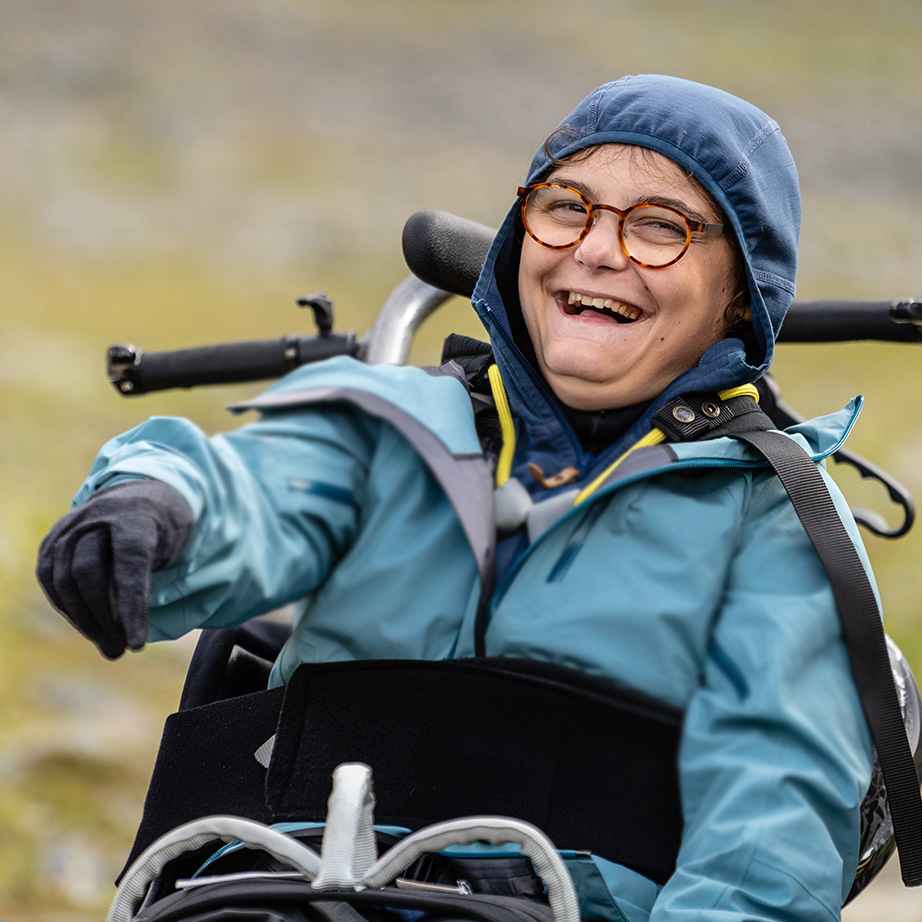
Astrid and Mette’s tips for trekking while using a wheelchair #5:
Select gear according to location, terrain and weather. Prepare to repair.
The final day was the most challenging. With little more than two kilometres left to the Kieron checkpoint, the wheelchair broke down. Patching it up with spare parts, they continued with care.
Then, the rain started.
If that wasn’t enough, just before reaching Abisko National Park, the repairs failed. Determined, the team tied the chair back together with the help of a climbing rope. The persistent rain made the team unusually quiet, as if each one of them was fighting an inner battle. In fact, Amalie Lilholdt Jacobsen, Astrid’s friend from university, became seriously cold and struggled to go forward. Mette says at that point they had to make some tough decisions:
“With about seven kilometres to go, we had a meeting. We had two options: set up camp for the night or continue to the finish line. The latter meant a late night before reaching our goal, but we decided to finish. I let both Morten and Fjällräven know we were on our way.”
The decision brightened the mood and they started to sing again (despite the puddles becoming bigger and deeper). Unfortunately, the rotten luck of the final day was not finished. With four kilometres left, Sine fell and injured her eyebrow.
Though others may have packed it in, Dream Team Astrid kept going and reached the finish line just before midnight. After eight days of trekking. Despite their feat, Mette warned Astrid that there probably would not be any applause awaiting their arrival. The site at the final camp, however, was unlike anything Mette could have expected:
“It was indescribable. A big crowd had gathered, with lights and headlamps. And after such a fantastic journey, it was the enormous support we encountered that made the biggest impact on Astrid, the Dream Team, and me. It came from everyone. From the contestants, from the staff at the mountain stations we passed and especially from the staff and volunteers from Fjällräven. The support was incredible and gave us so much energy and joy.”
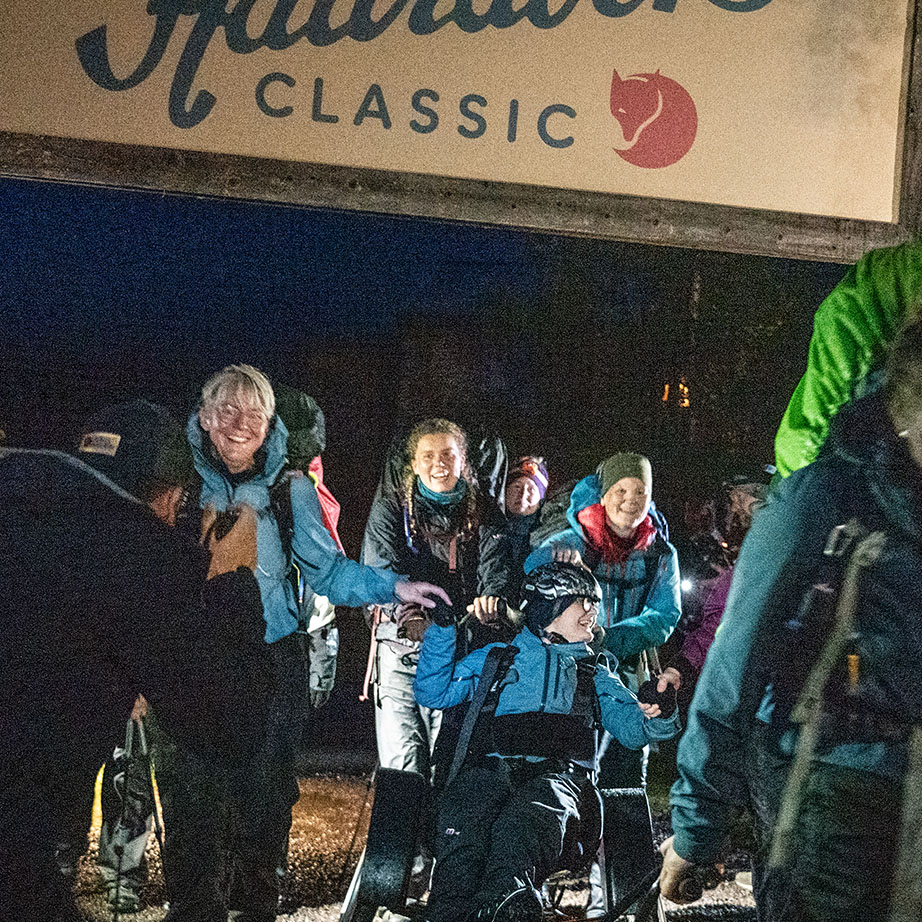
As Astrid says, “I am so grateful for the women we had on the team and their amazing mood. They fought so hard to help me achieve my dream.”
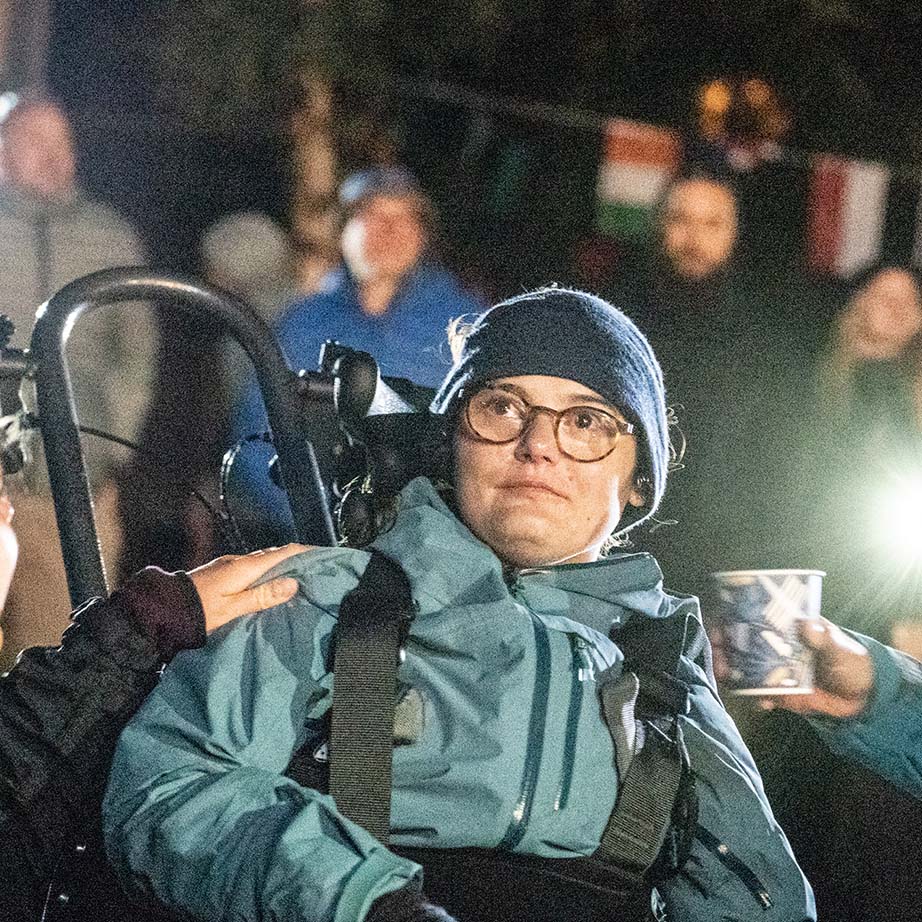
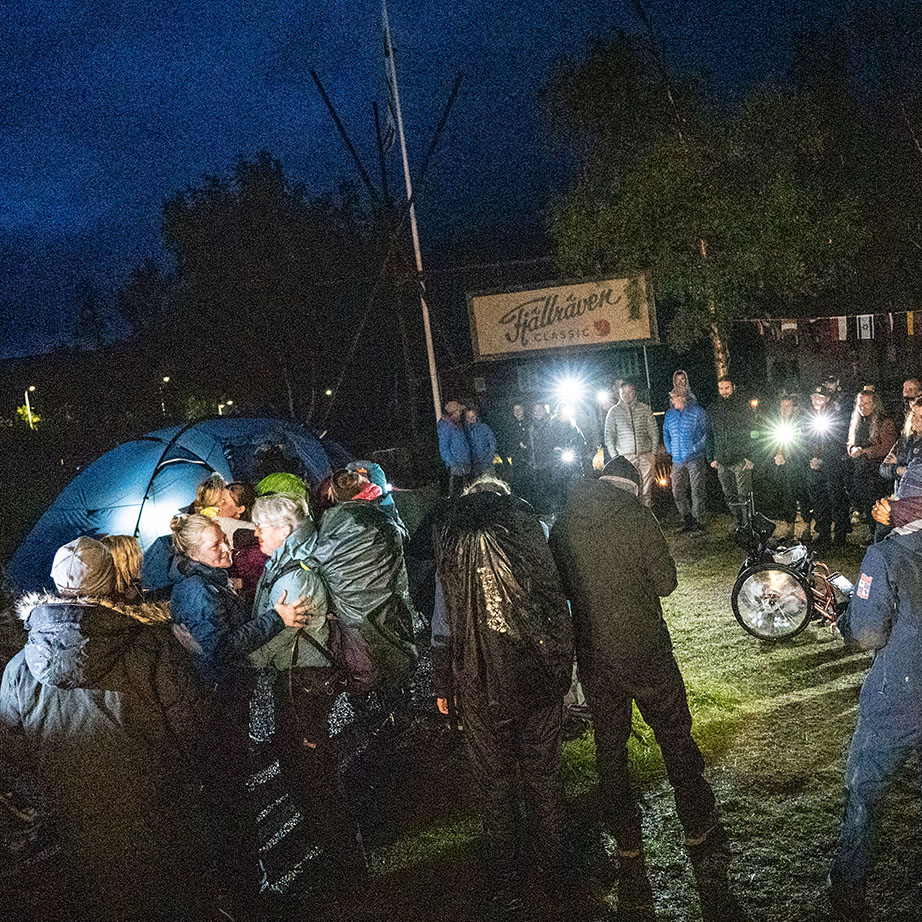
Fjällräven in-turn is grateful for the opportunity Dream Team Astrid gave us to learn more about potential barriers to nature. And what we can do to help reduce them. As Calle says,
“Fjällräven founder Åke Nordin always said, ‘Nothing is impossible – it just takes a little longer’. Dream Team Astrid got a little more time at their disposal, which allowed them to complete the trek in time. Normally a mountain hike is a pretty individualistic activity. You do all the work yourself, take all the steps yourself, and have turn inward to tap into your own power and determination when things get tought. Dream Team Astrid has really added team spirit and teamwork to mountain trekking, and has shown that together, you can get far. All the way to Abisko!”
Dream Team Astrid

Meet the extraordinary group of women whose perseverance and dedication ensured their daughter, colleague and friend achieved her goal.
Astrid Skovbakke: Student of BPA (User-Controlled Personal Assistance) at Egmont University
Mette Skovbakke: Mother and Nurse at Odense University Hospital
Sine Thulin: Best friend and former at-home assistant
Laura Schmidt Eriksen: Former at-home assistant
Maria Fogel: University assistant
Nana Houlind Simonsen: University assistant
Kathrine Solevad Engesgaard: University assistant
Amalie Lilholdt Jacobsen: University friend
Kartine Kingo Olesen: University friend
More stories
Fjällräven Classic
